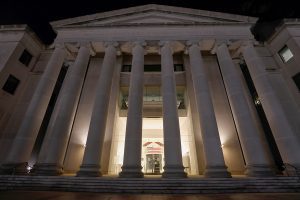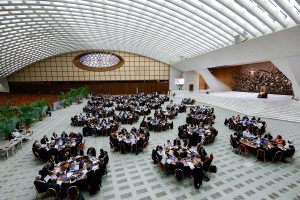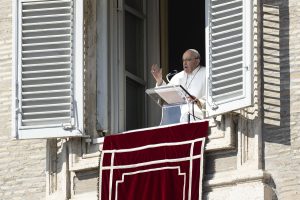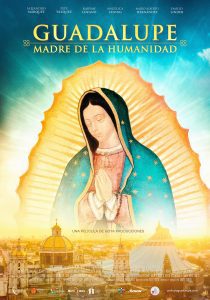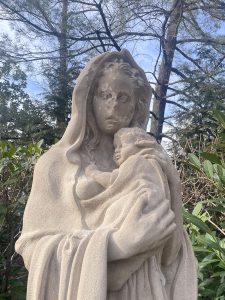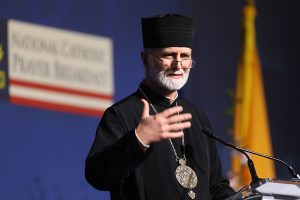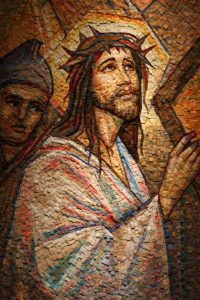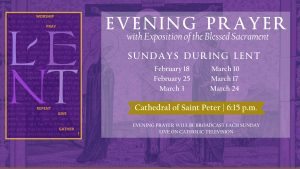(OSV News) – Five days after mourners filled the iconic St. Patrick’s Cathedral in New York for an irreverent “homecoming” funeral for actor and author Cecilia Gentili, New York Cardinal Timothy M. Dolan said he believes the “cathedral acted extraordinarily well.”
In a recording released Feb. 20 of the SIRIUS XM radio show “Conversation with Cardinal Dolan,” the cardinal praised the priests at St. Patrick’s for making a quick decision “that with behavior like this we can’t do a Mass. We’ll do Liturgy of the Word — the readings — and the sermon and prayers of petition and the Our Father.” The service “got worse with the eulogies that were very irreverent and disrespectful,” he added.
The 52-year-old Gentili, an Argentine native who had battled sexual abuse from age 6 and trafficking, as well as homelessness, heroin addiction and incarceration, died Feb. 6 of unnamed causes.
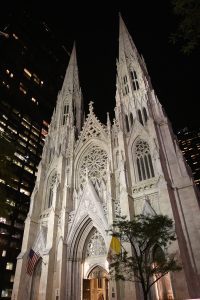
Gentili was the founder and principal consultant of Trans Equity Consulting and an advocate for the decriminalization of sex work.
The service featured “Mass cards and a picture near the altar showed a haloed Ms. Gentili surrounded by the Spanish words for ‘transvestite,’ ‘blessed,’ and ‘mother’ above the text of Psalm 25,” The New York Times reported. Many mourners, it said, sported attire that included “glittery miniskirts and halter tops, fishnet stockings, sumptuous fur stoles and at least one boa sewed from what appeared to be $100 bills.”
At one point in a livestream video from the service uploaded to Trans Equity’s YouTube channel, a male voice is heard, apparently speaking to Maryknoll Father Edward Dougherty, the presider, and saying, “What we’ll do is move to a funeral service – no Mass – so after that, we’ll do the final commendation and we’re done.”
Two days after the service, the cathedral’s rector, Father Enrique Salvo, labeled the behavior “scandalous.” He acknowledged that many people “have let us know they share our outrage over the scandalous behavior” that took place at the service. He said in a Feb. 17 statement that at Cardinal Dolan’s “directive, we have offered an appropriate Mass of Reparation.”
“That such a scandal occurred at ‘America’s Parish Church’ makes it worse,” Father Salvo said. “That it took place as Lent was beginning, the annual forty-day struggle with the forces of sin and darkness, is a potent reminder of how much we need the prayer, reparation, repentance, grace, and mercy to which this holy season invites us.”
On the radio show, which is co-hosted by Paulist Father Dave Dwyer, executive director of Busted Halo, Cardinal Dolan praised Father Salvo for his statement, adding that “when scandal (and) acts of disrespect toward the church go on, it does cause us a lot of anguish. I think our cathedral acted extraordinarily well.”
The LGBTQ group that arranged the funeral said Feb. 20 it wants “accountability” from the cathedral for shortening the service from a full Mass to a shorter liturgy without the Eucharist.
“A public apology will also be requested from the Archdiocese of New York for the painfully dismissive and exclusionary language used in their recent statement,” said GLITS Inc. (Gays and Lesbians Living in a Transgender Society) in a news release announcing it will hold a news conference with political and religious leaders and community members about the matter at City Hall Feb. 21.
In its Feb. 20 news release, GLITS said the “rash decision made by clergy members” at the cathedral “abruptly cut short … this joyful and celebratory commemoration of (Gentili’s) powerful legacy.” The service “ended an hour earlier than had been scheduled, thus denying her the full funeral Mass that was agreed upon,” it said.
The community Gentili served “requests a public apology to heal from the pain,” it said, and added that the rector “alluding to the presence of trans and the LGTBQ+ community at large as ‘forces of sin and darkness'” in his statement “is incendiary rhetoric that contributes to further discrimination against LGBTQ+ communities.”
The release cited Pope Francis’ call “for a more open and inclusive church,” adding, “We hope that LGBTQ+ parishioners and mourners won’t be left to feel abandoned yet again by the faith that they still want to call home.”
But Gentili was a self-professed atheist who had been “reexamining (a) relationship with religion for a long time,” according to a November 2023 interview. Gentili had come “from a family of so many different faiths,” including Catholicism, that the activist didn’t feel “attached to any of them.”
Ceyenne Doroshow, founder and director of GLITS and organizer of the funeral, told the NY Times Feb. 15 she had not disclosed to the cathedral’s pastoral staff that Gentili identified as transgender, saying, “I kind of kept it under wraps.”
The GLITS news release said the funeral organizers had “advised” the cathedral staff “to look up Gentili, her work and the community she served.” Expecting the funeral’s organizers to “affirmatively disclose the gender identity of their loved one would not be expected of a non-transgender person,” it said.
In his statement, Father Salvo said, “The Cathedral only knew that family and friends were requesting a funeral Mass for a Catholic, and had no idea our welcome and prayer would be degraded in such a sacrilegious and deceptive way.”
Cardinal Dolan on the podcast echoed what Father Salvo said, noting that priests at St. Patrick’s Cathedral “first of all didn’t know the background of the person who died.”
“They got a call that ‘our dear friend died and she’s a Catholic, and it would be a great source of consolation to have the funeral at the cathedral’ … and of course the priests said, ‘Come on in, you’re welcome’ — which is beautiful,” he said. “We don’t do FBI checks on people who want to be buried from there.”

